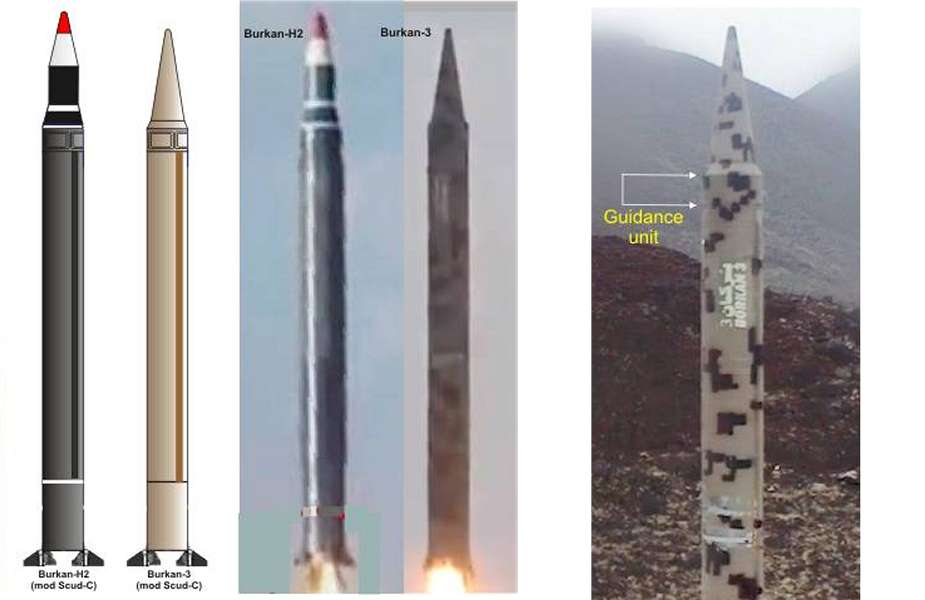- Army
- Conflicts in the world
- Israel - Iran conflict 2025
- Pakistan - India Conflict 2025
- Russia Ukraine War 2022
- Libya conflict day by day
- HAMAS - Israel War 2023
- Operation Serval in Mali French Army
- Sangaris operation Central African Republic
- Sangaris opération militaire République Centreafrique
- Ukraine - Russia conflict
- Syria conflict news
- Defence & Security Industry Technology
- Armies in the world
- Analysis Defense and Security Industry
- Conflicts in the world
- Navy
- Air
Yemen Houthi Rebels Launch Advanced Burkan-3 Ballistic Missile Against Israel
Our analysis of the video published by the Houthi militia on November 1, 2023, indicates that the missile used to target Israel is the Burkan-3, a new and advanced variant of the Houthi’s Burkan ballistic missile series. The Burkan-3 missile is reported to have a range of up to 1,200 kilometers, making it capable of reaching targets deep within Israeli territory.
Follow Army Recognition on Google News at this link

The Burkan-3 is a new generation of ballistic missile developed by the Houthis rebels with the support of North Korea and Iran (Picture source Internet)
The Burkan-3, also known as Borkan-3, was first seen in August 2019 in a video released by the Yemeni Houthi rebels. Open-source information at the time suggested that the missile was used to attack Dammam city in Saudi Arabia, although no such attack was confirmed.
Technical analysis of the Burkan-3 reveals that it is most likely a variant of the Iranian Qiam missile but with longer propellant tanks and a smaller warhead mass. This design change, combined with the notorious inaccuracy of most Scud variants, indicates that the Burkan-3 is essentially a terror weapon rather than a precision-guided weapon. The reduction in payload required to achieve its longer range diminishes its accuracy and impact.
The newer Burkan-3 differs from its predecessor, the Burkan-2H, in several ways. The Burkan-2H is a member of the Scud family which seems to be based on the Iranian Qiam 1/Scud-C. Its re-entry vehicle is conical, with a smaller diameter at its base than the missile. The Burkan-3 has a diameter of 0.88 meters and is considerably longer than the Qiam/Burkan-2H. It features a shorter re-entry vehicle and guidance sections similar to the Qiam, but its propellant tanks are longer, with a combined length of about 1.1 meters. This design allows for a larger propellant mass and longer burn time.
This recent development marks the first time the Houthi rebels have claimed missile and drone attacks targeting Israel, drawing their main sponsor Iran closer to the ongoing conflict between Israel and Hamas in the Gaza Strip. The involvement of the Houthis in the conflict raises concerns about the potential for a broader regional conflict.
The Israeli military responded to the attack by deploying its Arrow missile defense system, which successfully intercepted the incoming fire. The use of the Arrow system suggests that the attack involved long-range ballistic missiles. The interception of the missile fire sparked a rare air raid siren alarm in Eilat, located some 250 kilometers south of Jerusalem, sending residents fleeing into shelters.
The Houthis, who have controlled Yemen’s capital, Sanaa, since 2014, have been involved in a ruinous war in the country. Their arsenal includes the Burkan-3 missiles, which were on full display in a military parade earlier this year. The decision by the Houthis to target Israel is seen as a significant political move, likely influenced by their ties with Iran.
The Israeli Defense Force (IDF) has taken precautions by deploying missile boats to the Red Sea and shooting down Houthi drones and unidentified objects, which were likely Houthi missiles. Despite the Houthis' declaration of war, the IDF remains focused on the conflict in Gaza but is prepared to defend against threats from multiple fronts.
Hamas Israel War 2023


























